Island Countries Of The World
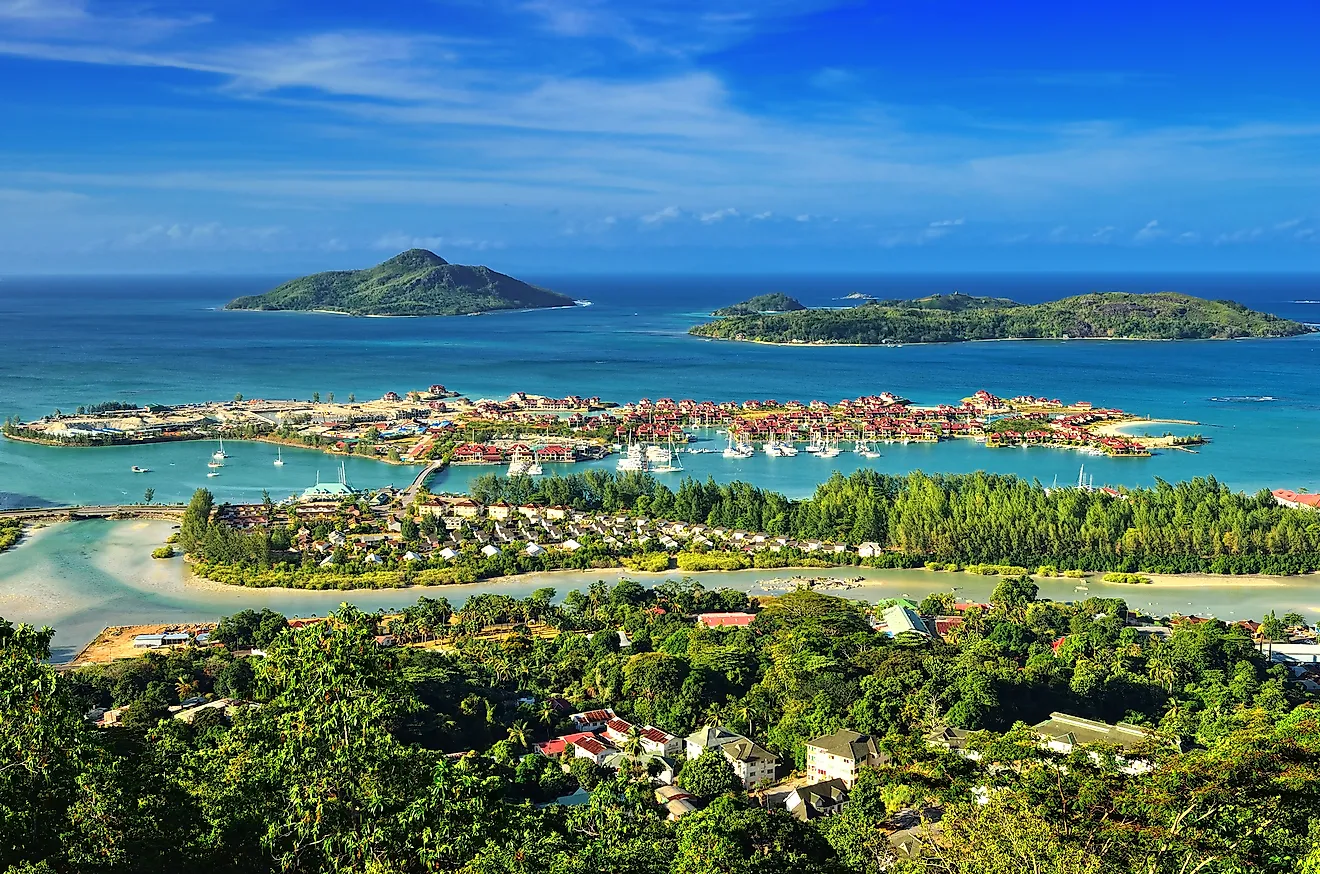
- There are 47 island countries in the world.
- Many island countries are small and sparsely populated, but some are large and rank among the world's most populous countries.
- There are island countries in every part of the world, in each of the world's oceans.
- Indonesia is the largest and most populous island country in the world.
There are currently 47 island countries in the world. Many of them are small and sparsely populated, though some are large and have very sizeable populations. In fact, there are island countries that rank among the most populous in the world. There are even island countries that are among the most powerful nation-states on Earth. Island countries can be found in every part of the world, in each of the world’s oceans.
Contents:
- Island Countries Of The Atlantic Ocean
- Island Countries Of The Indian Ocean
- Island Countries Of The Pacific Ocean
Island Countries Of The Atlantic Ocean
The Atlantic Ocean includes 18 island countries. Only 3 of these countries, however, are in the Atlantic Ocean itself. These are Iceland, Ireland, and the United Kingdom. The other countries are situated in the Caribbean Sea and the Mediterranean Sea. There are 13 island countries in the Caribbean and 2 in the Mediterranean.
The Atlantic Ocean Proper
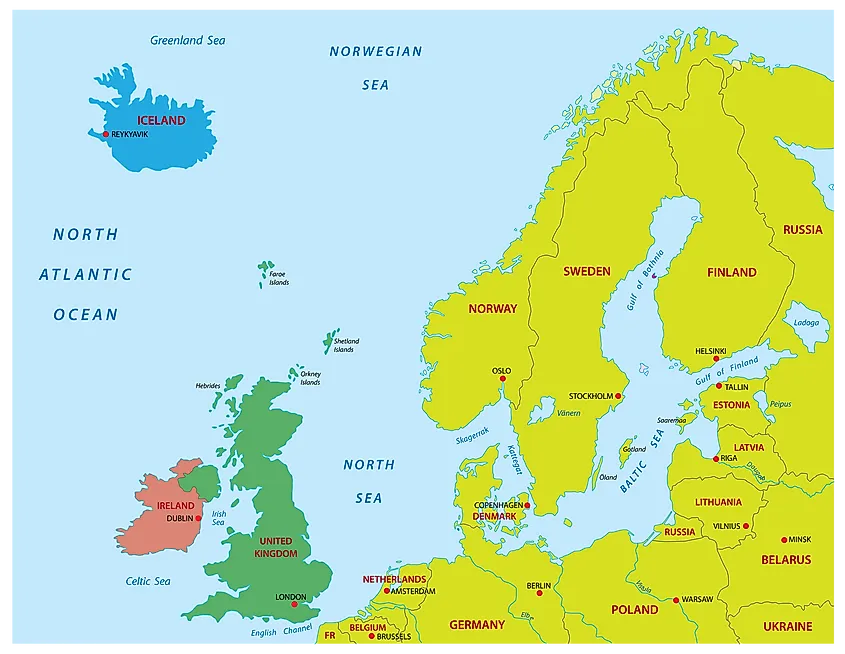
The largest and most populous island country in the Atlantic Ocean is the United Kingdom, which consists of the island of Great Britain and the northern part of Ireland, known as Northern Ireland. The fact that the UK is made up of islands has proven advantageous over the centuries, as no one has successfully invaded what is now the UK since the 11th century Norman Conquest, though many have tried. The UK gave rise to the British Empire, one of the most powerful empires in human history. At its height, the British Empire had territorial possessions in every corner of the world. For this reason, people used to say, “The sun never sets on the British Empire.”
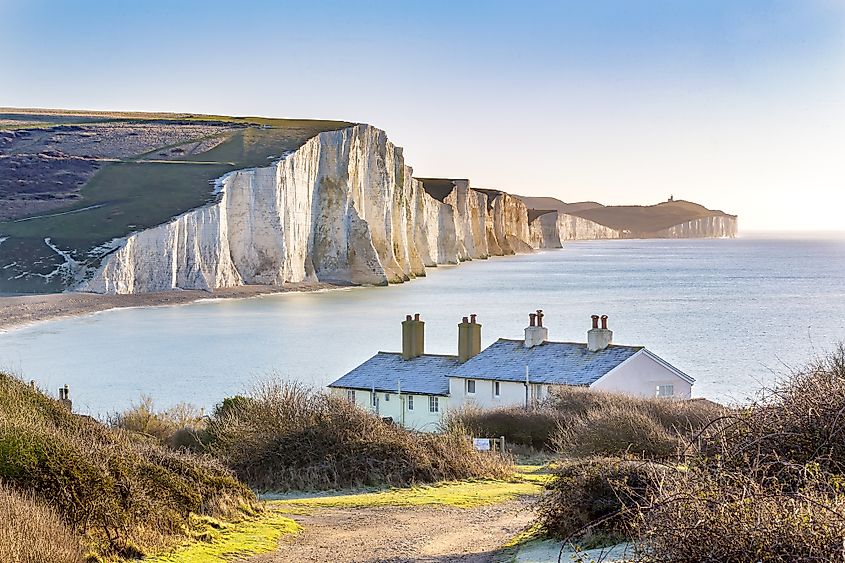
Today, the UK has a population of over 68 million people. It also has the world’s 6th largest economy, and possesses a formidable military force, one of the few in the world with nuclear armaments. The most telling evidence of what kind of influence an island country can have on the world, however, is probably the English language, which is now sometimes known as the universal language, since it is the most popular vernacular of international communication.
Iceland and Ireland, the other two island countries in the Atlantic Ocean proper, certainly do not have the clout that the UK has had historically and presently. In fact, for centuries, Ireland was an unwilling part of the British Empire. It gained home rule in 1922, then full independence as a republic in 1949. Today, Ireland is a country of approximately 4.98 million people, with membership in the European Union.
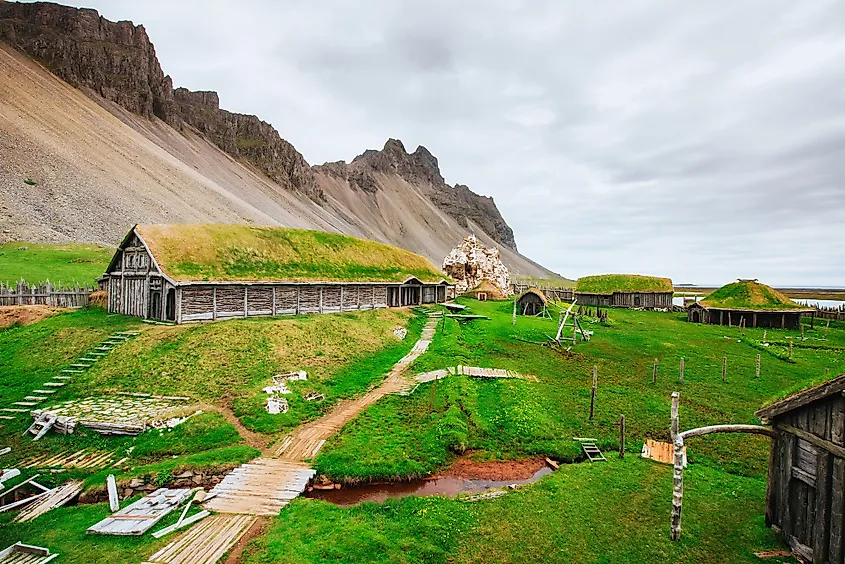
It was monks from Ireland who were the first people to settle in what became Iceland. They were followed by the Vikings, whose heritage Icelanders are not shy of boasting about. Iceland is the least populous country in Europe, with around just 343,000 inhabitants. The country is well-known as a geothermal energy powerhouse, because of its volcanic activity. What many people do not know, however, is that the island country is home to the world’s oldest parliament, the Althing, which still serves as Iceland’s legislature today.
The Caribbean

The 13 countries of the Caribbean are quite small compared to those in the main part of the Atlantic Ocean. The largest of the Caribbean island countries is Cuba, which has a land area of 110,860 sq. km. The country also has a sizeable population of about 11.3 million people, though it is not the most populous country in the region. That distinction goes to Haiti, which has an estimated 11.4 million people living in it. Haiti and the Dominican Republic to its east share the island of Hispaniola, the second largest island in the Caribbean Sea. Cuba, Haiti, the Dominican Republic, and Trinidad and Tobago are the only Caribbean island countries with populations in the millions. The rest of the Caribbean’s island countries have populations in the hundreds of thousands at most. The least populous Caribbean island country, St. Kitts and Nevis, has a population of less than 53,000. Nearly 44 million people in total live in the island countries of the Caribbean, which are heavily reliant on tourism to fuel their economies.
The Mediterranean

The Mediterranean Sea has two island countries situated in it, Malta and Cyprus. Both are now members of the EU, though from a geographical perspective, Cyprus is actually part of Asia. Malta has a population just shy of 443,000, while Cyprus has a population of approximately 1.2 million.
Malta has a mostly homogenous population, with 95% of its population being of Maltese ancestry. The Maltese language is a Semitic language related to Arabic and Hebrew. Most Cypriots, as the people of Cyprus are called, are of either Greek or Turkish origin, with the former being the majority. In 1974, Turkey invaded Cyprus following a coup staged by Greek nationalists, who were attempting to unite the island with Greece. Turkish forces remain in occupation of the northern part of the island to this day.
Island Countries Of The Indian Ocean

The Indian Ocean contains 6 island countries: The Seychelles, Comoros, Mauritius, Madagascar, Sri Lanka, and the Maldives. Madagascar, located off the west coast of Southern Africa, across the Mozambique Channel, is the largest and most populous island country in the Indian Ocean, as it has a population of more than 28.4 million people, and a total land area of 581,795 sq. km. The Seychelles, which is situated far off the east coast of Eastern Africa, is the smallest and least populated country in the Indian Ocean. Its population is just shy of 99,000, and its total land area is just 460 sq. km. Madagascar and Sri Lanka are large islands, while Mauritius is a small island country. The Seychelles, Comoros, and Maldives are all archipelagos made up of many small islands.
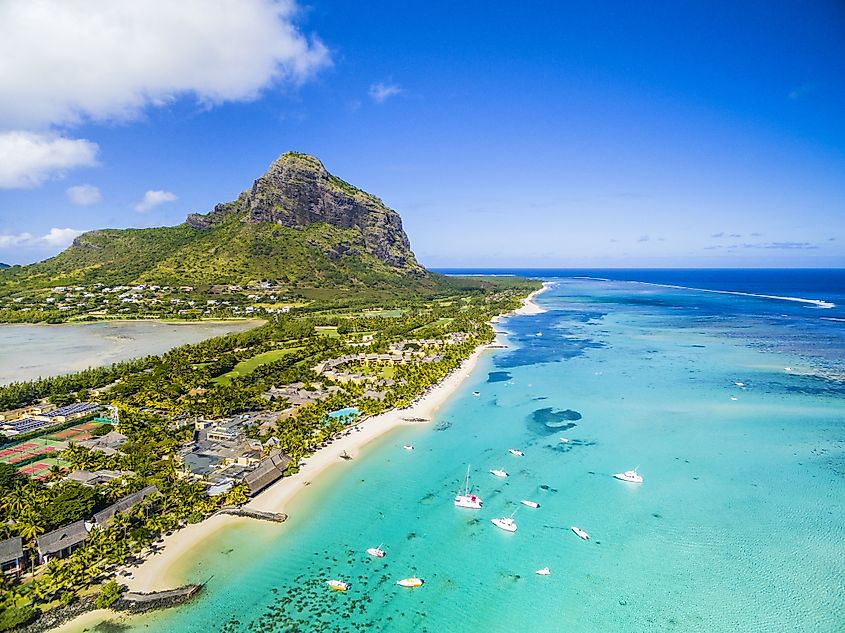
While Mauritius and the Seychelles are quite stable, the other island countries of the Indian Ocean have had more than a fair share of instability. The Comoros, for example, has had more than twenty coups since independence. Madagascar has also been plagued by coups and military dictatorships. Sri Lanka fought a civil war against the separatist Tamil Tigers for many years, while the Maldives has only been a multiparty democracy since 2005, and has continued to suffer turmoil since then.
Island Countries Of The Pacific Ocean
The Pacific Ocean is home to 23 island countries. These include large island countries, like Japan, the Philippines, Indonesia, Australia, and New Zealand, as well as small countries located in Oceania.
Japan
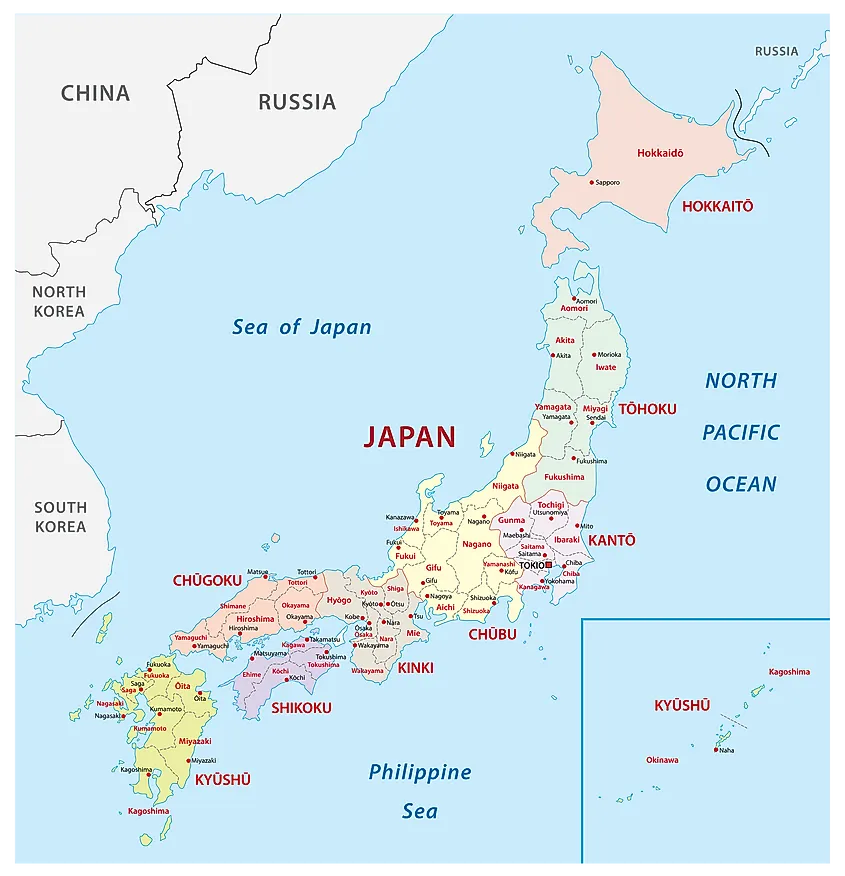
Japan is the lone island country in East Asia. It has a population of roughly 126 million people, making it the second most populous island country on Earth after Indonesia. The Japanese archipelago contains 6,852 islands, the largest of which are Honshu, Hokkaido, Shikoku, Kyushu, and Okinawa.
Japan is unique in that unlike other countries in Asia, it has managed to avoid colonial conquest by European powers. In fact, at one time, Japan had quite the empire of its own. Today, however, Japan flexes its power economically. Indeed, the country now has the world’s third largest economy, after China and the U.S. Japanese brands like Toyota, Suzuki, and Sony are household names all over the world.
Southeast Asia
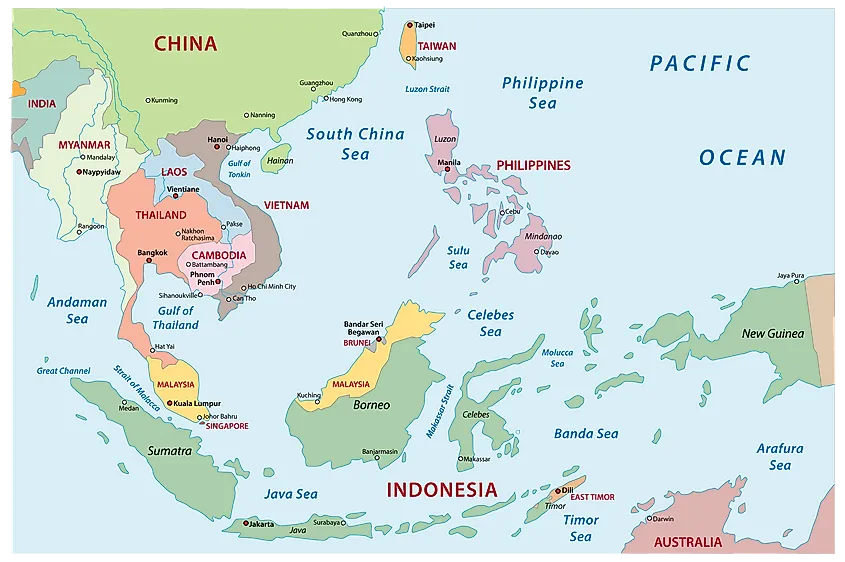
There are 5 island countries located in Southeast Asia. The largest and most populous is Indonesia, which has a population of approximately 276 million people, making it the most populous island country in the world. Indonesia is also both the largest island country in Southeast Asia and the second largest island country in the world after Australia. In addition, Indonesia is the most populous Muslim country in the world. The country contains a total of 17,508 islands. The largest islands include Sumatra, Java, Borneo, and New Guinea. Indonesia shares Borneo with Malaysia and Brunei, while New Guinea is shared with Papua New Guinea. The country is home to multitudes of different ethno-linguistic groups. In fact, the country’s national motto is, “Unity in Diversity.”
The other large island country in Southeast Asia is the Philippines, which consists of 7,640 islands. The country has a sizeable population of about 111 million. Like Indonesia, the Philippines also has many ethno-linguistic groups, though Tagalog is recognized as the country’s national dialect. The Philippines is the most populous Christian country in Asia, as the overwhelming majority of its people practice Roman Catholicism.
The other, smaller island countries of Southeast Asia are Singapore, East Timor, and Brunei. Singapore, though small, is an economic powerhouse, and one of the so-called Asian Tiger economies. Brunei is a sultanate based on the island of Borneo, and is home to Southeast Asia’s only absolute monarchy. East Timor is the newest country in Southeast Asia, having gained independence in 2002.
Oceania
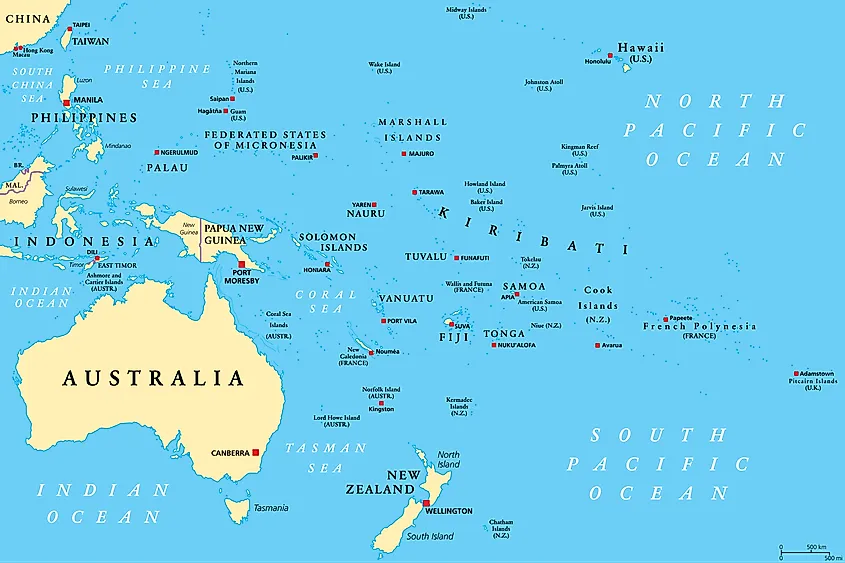
Australia, New Zealand, and Papua New Guinea are three of Oceania’s largest island countries, all of which have populations in the millions. The rest of the region’s countries are miniscule in comparison. They consist of many tiny islands, some of which are so small that a slight rise in sea levels could inundate them. These small island states are found in the Oceanian subregions of Polynesia, Melanesia, and Micronesia. They are heavily reliant on imports and economic aid from larger countries because of their small size and very limited resource base. Almost each of the small island states in the South Pacific has their own indigenous language. Some of these countries, like the Federated States of Micronesia, have several indigenous languages. All of the small island countries of the South Pacific have very small populations. Fiji is the most populous with approximately 902,000 people. The least populous of the tiny island countries is Nauru, which has less than 11,000 inhabitants.











